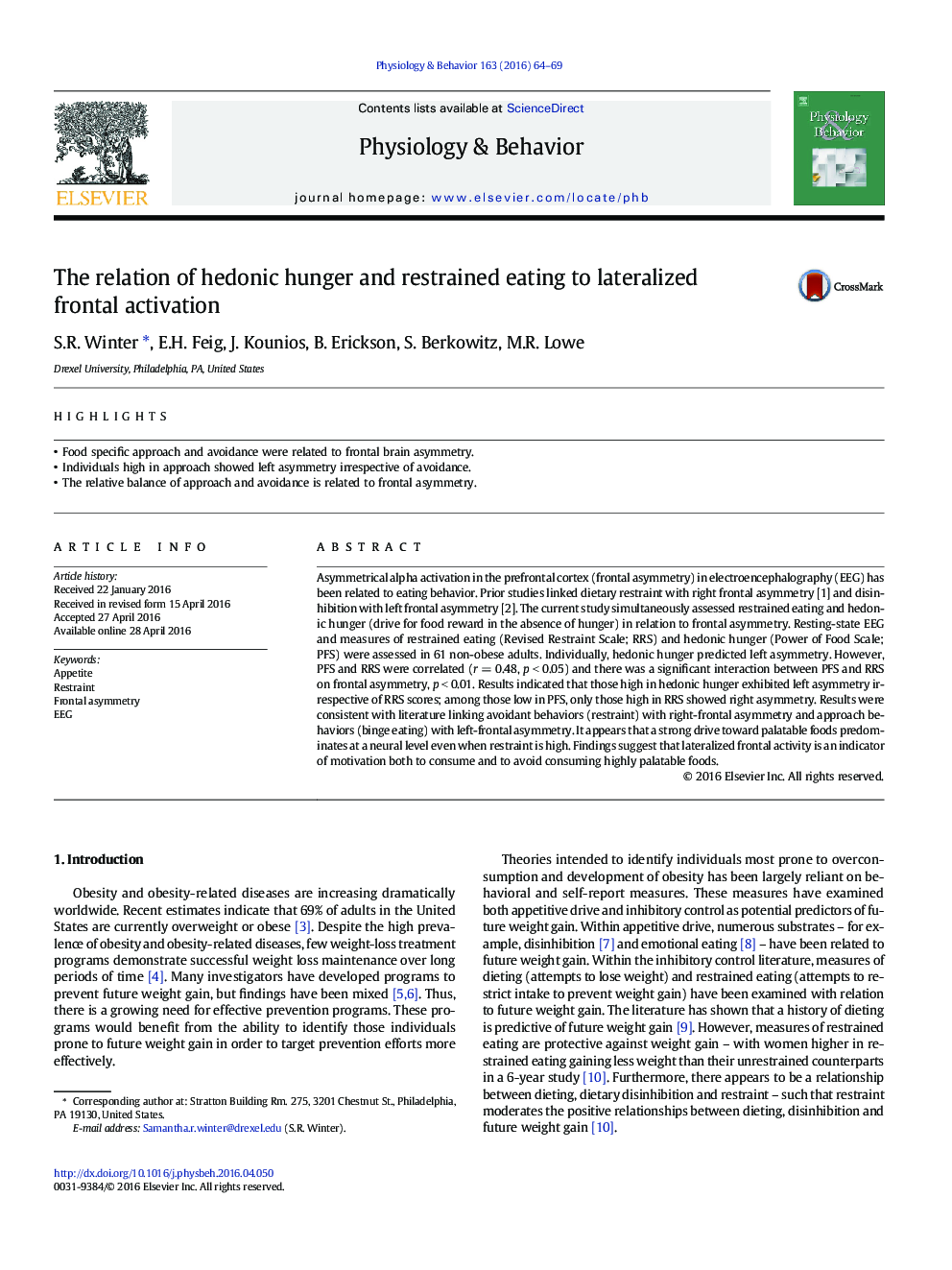| Article ID | Journal | Published Year | Pages | File Type |
|---|---|---|---|---|
| 5922888 | Physiology & Behavior | 2016 | 6 Pages |
â¢Food specific approach and avoidance were related to frontal brain asymmetry.â¢Individuals high in approach showed left asymmetry irrespective of avoidance.â¢The relative balance of approach and avoidance is related to frontal asymmetry.
Asymmetrical alpha activation in the prefrontal cortex (frontal asymmetry) in electroencephalography (EEG) has been related to eating behavior. Prior studies linked dietary restraint with right frontal asymmetry [1] and disinhibition with left frontal asymmetry [2]. The current study simultaneously assessed restrained eating and hedonic hunger (drive for food reward in the absence of hunger) in relation to frontal asymmetry. Resting-state EEG and measures of restrained eating (Revised Restraint Scale; RRS) and hedonic hunger (Power of Food Scale; PFS) were assessed in 61 non-obese adults. Individually, hedonic hunger predicted left asymmetry. However, PFS and RRS were correlated (r = 0.48, p < 0.05) and there was a significant interaction between PFS and RRS on frontal asymmetry, p < 0.01. Results indicated that those high in hedonic hunger exhibited left asymmetry irrespective of RRS scores; among those low in PFS, only those high in RRS showed right asymmetry. Results were consistent with literature linking avoidant behaviors (restraint) with right-frontal asymmetry and approach behaviors (binge eating) with left-frontal asymmetry. It appears that a strong drive toward palatable foods predominates at a neural level even when restraint is high. Findings suggest that lateralized frontal activity is an indicator of motivation both to consume and to avoid consuming highly palatable foods.
